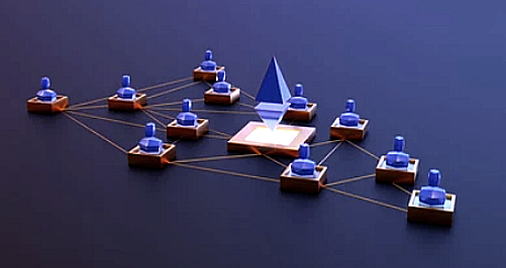Accredited InvestorsAltcoinAnatoli UnitskyAnti-Money Laundering (AML) In CryptoAPIArbitrageArtCoin TokenArticle DirectoryASICAuction Terminology GlossaryBasics of Stock Market InvestingBear MarketBest Crypto Payment Provider In the WorldBitcoinBlockchainBlockchain ConfirmationBlockchain Consensus MechanismBlockchain ForkBlockchain GlossaryBored Ape Yacht ClubBuild a Business That OutperformsBull MarketBuying SkyWay SharesByzantine Fault Tolerance (BFT) ExplainedCasascius CoinCentral Bank Digital Currency (CBDC)Centralized Crypto ExchangeCoinCoinsetCold WalletCollateralCommodity Futures Trading Commission (CFTC)Cross-Chain TechnologyCRUCrypto ExchangeCrypto GlossaryCrypto JokesCrypto Terms to KnowCrypto TickerCryptocurrencyCryptographyCryptojackingCryptounit BlockchainCryptounit GlossaryCryptounit ProgramdApp (Decentralized Application)Dead CoinDecentralized Exchange (DEX)Decentralized Finance (DeFi)Difference Between Bitcoin and EthereumDifferent Ways of Investing MoneyDigital CurrencyDistributed LedgerDo Your Own Research (DYOR)Dollar Cost Averaging (DCA)Dow Jones Industrial Average (DJIA)EncryptionERC-20ERC-721EthereumEvoScentFear Of Missing Out (FOMO)Fear, Uncertainty and Doubt (FUD)Fiat MoneyFNT Fintech CompanyGenesis BlockGlobal Unit PayGlossary of Banking TermsGlossary of Business TermsGlossary of Financial TermsHalvingHODLHot WalletHow Do I Start InvestingHow Rich is Satoshi Nakamoto?How to Create a BlockchainHow to Find Private InvestorsHow to Get Into FintechHow to Program Smart ContractsI Am Thrilled to Be a Part of This Global ProjectInitial Coin Offering (ICO)Initial Public Offering (IPO)Initial Token Offering (ITO)Innovation Basalt TechnologyInnovative Transportation TechnologiesInternational Bank Account Number (IBAN)Investing in Gold Mining StocksInvesting in Gold MiningJagerJoy of Missing Out (JOMO)Know Your Customer (KYC)LedgerLiquidity in CryptocurrencyMaker and Taker Fees in Crypto TradingMarket Capitalization (Market Cap)Meme CoinMetal Credit CardMetaMaskMillenials Now Have Access to Generational WealthMy Best Investment EverNew Digital EvolutionNFT GlossaryOff-Chain TransactionsOn-Chain TransactionsOpen Edition NFTPeer-to-Peer (P2P)Personal Loan GlossaryProbably the Best STO on the MarketProof of Stake (PoS)Real Estate Glossary of TermsReal Estate Investing GlossaryRebase TokenSecurities and Exchange Commission (SEC)Security Token ExchangesSecurity Token Offering (STO)Soulbound Decentralized Identities for Security TokensSoulbound ID Launch by Stobox Proves a SuccessSoulbound TokensStoboxStock Market GlossaryTestimonialsTether Platform and Token (USDT)UnitEx ExchangeUnitsky String TechnologiesUNTBUSDUValidatorWe Started Investing When We Were 25What are Blue Chip NFT?What are Blue Chip Stocks?What are Crypto Assets?What are Crypto Smart Contracts?What are CryptoPunks NFT?What are Digital Assets?What are Digital Collectibles?What are Gas Fees?What are Gas Wars?What are Hashmasks?What are Non Fungible Tokens?What are Non-Sufficient Funds (NSF)?What are Soulbound Tokens (SBT)?What are Stablecoins in Crypto?What are Transactions Per Second (TPS)?What are Utility NFTs?What are Utility Tokens?What Does Burning Crypto Mean?What Does Diamond Hands Mean?What Does Paper Hands Mean?What Does To The Moon Mean?What Does WAGMI Mean?What Happened to Satoshi Nakamoto?What is a 51% Attack?What is a Baby Boomer?What is a Backlink?What is a Banner?What is a Barcode?What is a Bid-Ask Spread in Crypto?What is a Block in Blockchain?What is a Block Reward?What is a Blockchain Address?What is a Blockchain Node?What is a Blockchain Oracle?What is a Blog?What is a Bond?What is a Bot?What is a Broker?What is a Business Accelerator?What is a Cash Cow?What is a Commercial Bank?What is a Commodity?What is a Con?What is a Credit?What is a Credit Limit?What is a Credit Rating?What is a Crypto Airdrop?What is a Crypto Bridge?What is a Crypto Scam?What is a Crypto Token?What is a Crypto Wallet?What is a Crypto Whale?What is a Crypto Winter?What is a Cryptocurrency Public Ledger?What is a Cryptocurrency Roadmap?What is a DAO?What is a Dark Pool?What is a Day Trader?What is a Dead Cat Bounce?What is a Default?What is a Derivative?What is a Digital Credit Card?What is a Fiscal Quarter?What is a Fungible Token?What is a Governance Token?What is a Grace Period?What is a Hard Fork?What is a Hot Wallet?What is a Hybrid Blockchain?What is a Hybrid PoW/PoS?What is a Joint Account?What is a Market Cap?What is a Merkle Tree in Blockchain?What is a Mining Farm?What is a Nonce? What is a PFP NFT?What is a POS System?What is a Prepaid Card?What is a Private Blockchain?What is a Private Key?What is a Public Blockchain?What is a Public Key?What is a Reserve Currency?What is a Ring Signature?What is a Routing Number?What is a Rug Pull in Crypto?What is a Safe Deposit Box?What is a Satoshi?What is a Security Token?What is a Seed Phrase?What is a Shitcoin?What is a Sidechain?What is a Soft Fork?What is a Spot Market?What is a State Bank?What is a SWIFT Code?What is a Tax Identification Number (TIN)?What is a Time Deposit?What is a Transaction Account?What is a Variable Interest Rate?What is a Virtual Assistant (VA)?What is a Virtual Card?What is a Virtual Currency?What is a Visa Card?What is a Whitelist in Crypto?What is a Whitepaper?What is Accounts Payable (AP)?What is AMA in Crypto?What is Amortization?What is an Accrual?What is an ACH Transfer?What is an Actuary?What is an Addendum?What is an Algorithm?What is an Angel Investor?What is an Annuity?What is an Asset?What is an ATM?What is an Atomic Swap?What is an Audit?What is an Avatar?What is an EIN?What is an Embargo?What is an Entrepreneur?What is an IDO (Initial Dex Offering)?What is an Interest Rate?What is an Internet cookie?What is an Investment Bank?What is an NFT Drop?What is an NFT Floor Price?What is an Ommer Block?What is an Orphan Block?What is an Outstanding Check?What is an Overdraft?What is Artificial Intelligence (AI)?What is B2B (Business-to-Business)?What is B2G (Business-to-Government)?What is Bartering?What is Bitcoin Dominance?What is Bitcoin Pizza Day?What is Blockchain Immutability?What is Blockchain Used For?What is BRICS?What is Business-to-Consumer (B2C)?What is C2C (Customer to Customer)?What is Capitalism?What is Catfishing?What is CFD Trading?What is Check Kiting?What is Cloud Mining?What is Communism?What is Content Marketing?What is Decentralization in Blockchain?What is DeFi in Crypto?What is Delisting?What is Depreciation?What is Digital Marketing?What is Diversification?What is Double Spending?What is Dumb Money?What is Dumping?What is Earnings Per Share (EPS)?What is Economics?What is Email Marketing?What is Equity?What is Etherscan?What is Fintech?What is Foreign currency?What is Forex?What is Fundamental Analysis (FA)?What is GameFi?What is Generative Art NFT?What is Gwei?What is Hard Currency?What is Hash Rate?What is Hashing in Blockchain?What is Inflation?What is Initial Game Offering (IGO)?What is Interest?What is Interest Income?What is Mainnet?What is Mastercard?What is Metaverse in Crypto?What is Mining in Cryptocurrency?What is Minting NFT?What is Mobile Banking?What is Money Laundering?What is NFT Alpha?What is NFT Metadata?What is NFT Rarity?What is NGMI Meaning?What is Nominal Interest Rate?What is Online Banking?What is Open-End Credit?What is OpenSea NFT Marketplace?What is Personal Identification Number (PIN)?What is Play-to-Earn?What is Polygon?What is Proof of Authority (PoA)?What is Proof of Work (PoW)?What is Public Key Cryptography?What is Pump and Dump?What is Quantum Computing?What is Refinancing?What is Retail Banking?What is Ripple?What is Sharding?What is Slippage in Crypto?What is Smart Money?What is Solvency?What is Soulbound ID?What is SSL?What is Staking in Cryptocurrency?What is Technical Analysis (TA)?What is Testnet?What is the Ask Price?What is the Better Business Bureau (BBB)?What is the Bid Price?What is the Dark Web?What is the InterPlanetary File System (IPFS)?What is the Gold Standard?What is the Lightning Network?What is the Prime Rate?What is the Sandbox?What is the Secondary Market?What is the World Bank?What is Tier 1 Capital?What is Tokenomics?What is TRC-20?What is Universal Banking?What is Unspent Transaction Output (UTXO)?What is Usury?What is Volatility in Crypto?What is Wash Trading?What is Web3?What is Whisper?What is XRP?What is Zero-Knowledge Proof (ZKP)?Who is Beeple?Who is Satoshi Nakamoto?Who is Vitalik Buterin?Why Tokenization is a Safe HavenWhy You Should Try Your Hand at Trading
Peer-to-Peer (P2P)
- Home
- Cryptounit Glossary
- Peer-to-Peer (P2P)
Peer-to-peer (P2P) is a distributed networking or computing architecture in which two users connect directly with each other without the involvement of a third party intermediary. Instead, the buyer and seller transact with each other directly through the P2P service.

Each peer in a P2P network is referred to as a node, and the combined work of these nodes is what keeps the system running. In this scenario, each node (peer) functions as both a client and a server for other nodes. This means that all peers perform the same function, which is to receive and transmit digital data.
Consequently, the structure of a P2P network is managed by its users, who can both provide and use resources. There is no centralized server or host, which distinguishes P2P systems from typical client-server systems where data is transmitted unidirectionally from a centralized server to its clients.
Centralized Exchanges and Peer-to-Peer Exchanges
There are two types of cryptocurrency exchanges: centralized exchanges and peer-to-peer exchanges. Because centralized exchanges are strictly regulated in many parts of the world, its users must submit personal information that helps identify them and, eventually, their transactions.
P2P exchanges, also known as decentralized exchanges (DEX), on the other hand, normally do not need participants to prove their identity. Transactions are conducted directly between two parties, with no intermediaries processing any element of the transaction. There is no centralized exchange and there is no order book to match traders with orders.
This trading approach makes transactions censorship resistant, inexpensive, private, and secure.
However, it is this lack of user transparency that can promote criminal behavior by users on P2P exchanges, prompting regulators to step in with more restrictions and regulations. P2P exchanges have also reduced liquidity and trading volumes, which has an effect on trading times.
P2P systems' decentralized framework makes them highly resistant to cyber assaults and also more scalable. The more people who utilize it, the more resilient and scalable it becomes. Because there is no single point of failure in larger P2P networks, they reach great levels of security.
The Role of P2P in Blockchains
Blockchain technology is a component of cryptocurrency technology. It is a network in which users can make, process, and verify payments without the need for a central currency issuer or clearinghouse. Blockchain technology enables users to conduct business using cryptocurrencies and to enter into and enforce smart contracts.
The intrinsic P2P architecture of blockchain technology allows cryptocurrencies to be moved globally without the need for intermediaries or a central server. In addition, anyone can set up a node to participate in the process of verifying and validating blocks.
Nodes in the context of crypto blockchains can play a variety of roles. Full nodes, for example, are responsible for network security by verifying transactions against the system's consensus rules.
Each full node maintains a complete, up-to-date copy of the blockchain, allowing them to participate to the collective work of verifying the distributed ledger's true state. It should be noted, however, that not all full validating nodes are miners.
Benefits of Peer-to-Peer (P2P)
Blockchains' peer-to-peer architecture offers numerous benefits. One of the most significant is that P2P networks are more secure than typical client-server systems. Because blockchains are distributed across a vast number of nodes, they are largely immune to the Denial-of-Service (DoS) attacks that afflict many systems.
Aside from security, the use of P2P architecture in crypto blockchains makes them resistant to central authority censorship. Governments cannot freeze or empty cryptocurrency wallets. To prevent payments from being blocked or limited by third parties, some online merchants have already adopted payments in cryptocurrency.
Limitations of Peer-to-Peer (P2P)
Adding transactions to a blockchain needs a large amount of computer power since distributed ledgers must be updated on every single node rather than on a central server. While this increases security, it also affects efficiency and is one of the key barriers to scaling and widespread adoption.
Another potential limitation is the possibility of assaults during hard fork events. Because most blockchains are decentralized and open source, groups of nodes are allowed to copy and modify the code in order to build a new, parallel network. Hard forks pose no danger on their own. However, if certain security precautions are not correctly implemented, both chains may become subject to active attacks.
Furthermore, the decentralized nature of P2P networks makes them difficult to govern and regulate. Several P2P applications and companies have been implicated in illegal activities and copyright infringement.
Related Articles

What is a Blockchain Node?
Simply said, a node is any device that participates in a blockchain network. Nodes are typically computers or servers that perform some function for the network to which they are connected.

Centralized Crypto Exchange
Furthermore, as the central clearing counterparty, the CEX manages the whole transaction, ensuring that all obligations between buyer and seller are satisfied and the...

Decentralized Exchange (DEX)
DEXs are critical components of cryptocurrency transactions because they allow blockchains or secured ledgers to assume the responsibility of assuring secure trades rather than a centralized system of banks, stock brokers, and government.

What is Blockchain Used For
The world is full of high-tech solutions, but none has been as revolutionary for the digital world as blockchain technology. Blockchain is a distributed ledger technology that allows users to...
- Home
- Cryptounit Glossary
- Peer-to-Peer (P2P)